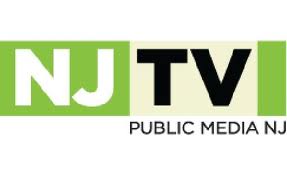|

Aired October 20, 2015
By Briana Vannozzi
Rows of houses tucked neatly in this Burlington County suburb are the shining example of the Mount Laurel doctrine done right. The 1983 Supreme Court ruling that created a model for building low- to moderate-income homes in the suburbs has seen its share of ups and downs, but now it’s in limbo.
“Our state, for the past 15 years, has failed generally in having a good housing policy,” said Associate Director for Fair Share Housing Center Kevin Walsh.
Since the state’s Council on Affordable Housing, or COAH, essentially became defunct and the Supreme Court stepped in, municipalities have been under the gun to meet the rising demand for affordable units in their towns. Several reports have circulated in recent months with conflicting analysis on those obligations.
“New Jersey over the next ten years, has a need for over 200,000 homes that are affordable to working families, people with disabilities, seniors on fixed incomes,” said Walsh.
Walsh says while some towns, especially those in urban areas, have met their constitutional requirement, others who fear shifting their neighborhood demographic, have blocked it.
“It’s one of the most racially and economically segregated states in the country that often makes these issues hard to address, but once we close that separation we often find that people become more allies than enemies,” he said.
As was the case in Mount Laurel, where despite initial opposition the neighborhoods have transitioned seamlessly. His organization estimates over the next decade, an average of 620 affordable homes are needed per town.
“We have a real market crisis we do not have enough homes for working families, parents with small children, we need to make sure that we have starter homes and places for seniors to live,” said Staci Berger, President and CEO of Housing and Community Development.
Fair Share’s report prompted two more from the state League of Municipalities. Their estimates came in much lower.
“Over the next 10 years, somewhere between 17,000 and 24,000 affordable housing units that can be produced through inclusionary zoning,” said Michael Cerra, Assistant Executive Director for the League.
Cerra says that’s a more realistic number for the state’s economy. His organization has been providing tools and tips for municipalities. He says they aren’t dodging or delaying their requirements.
“The objective of just laying more and more higher obligations on municipalities doesn’t actually achieve the means. What we need is the state legislature and the administration to work with groups like the League and others to advance housing reform through the legislature that’s sustainable that’s rational, consistent with state regulations and fully funded,” he said.
“As recently as last week where the governor’s office was talking about having to end rental vouchers for 3,000 folks with disabilities, there’s was a perception that there are just homes out there that people could move into. And nothing could be further from the truth,” Berger said.
Towns are expected to file their plans in December or January to show how, through zoning, they’ll meet the needs of their communities.
Chasing the Dream: Poverty and Opportunity in America is a multi-platform public media initiative that provides a deeper understanding of the impact of poverty on American society. Major funding for this initiative is provided by The JPB Foundation. Additional funding is provided by Ford Foundation.
|